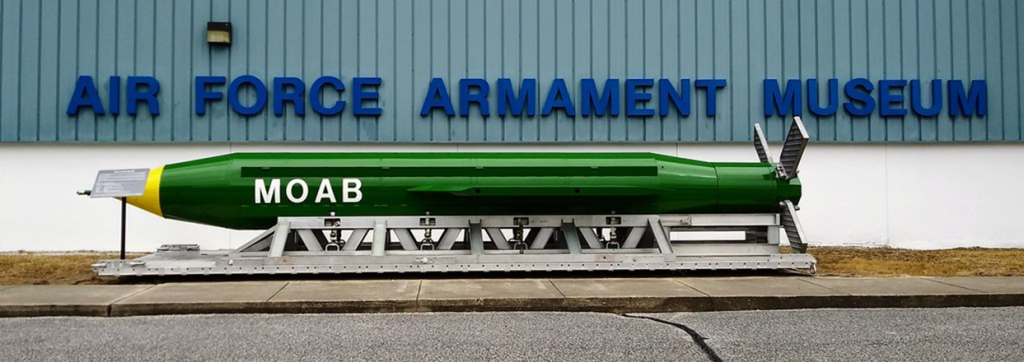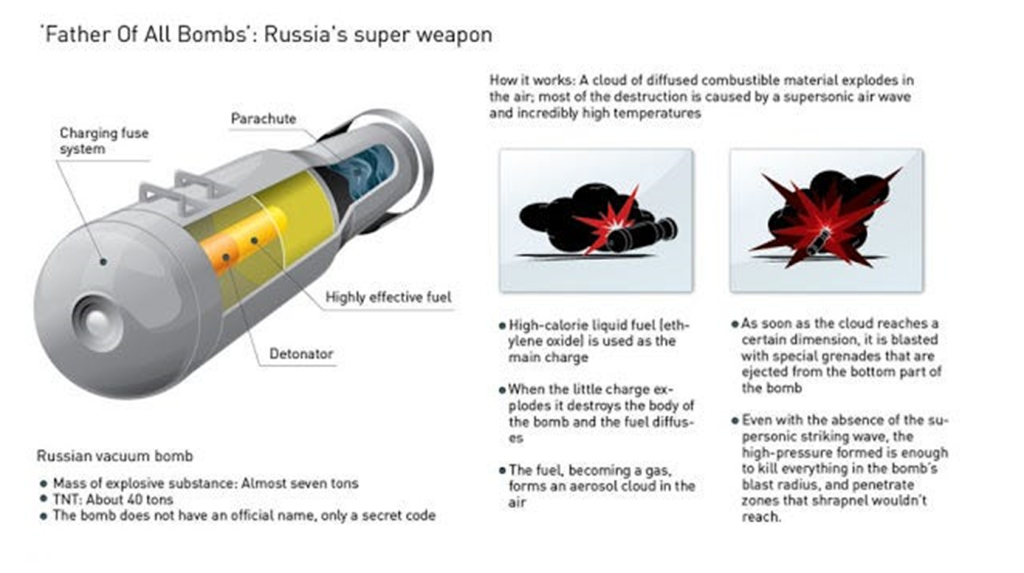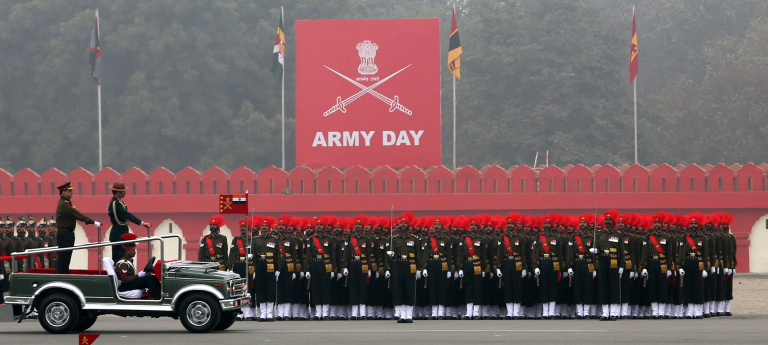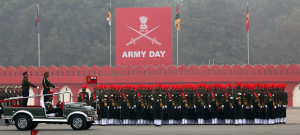The GBU-43/B Massive Ordnance Air Blast Bomb – or, in military speak, Mother of All Bombs.
GBU-43/B Massive Ordnance Air Blast Bomb
It is a huge weapon – a 30ft (9m), 21,600lb (9,800kg), GPS-guided munition that is dropped from the cargo doors of an MC-130 transport plane and detonates shortly before it hits the ground. The MOAB falls from the aircraft on a pallet, which is then tugged aside by a parachute allowing the weapon to glide down, stabilized and directed by four grid-like fins.
Its principal effect is a massive blast wave – said to stretch for a mile in every direction – created by 18,000lb of TNT. The bomb’s thin aluminum casing was designed specifically to maximise the blast radius. The bomb is designed to damage underground facilities and tunnels.
The weapon was developed for use in the Iraq war – at a reported cost of $16m (£13m) each – and was first tested in 2003, but never used in action – until now.
And yet, the MOAB is not the US military’s heaviest non-nuclear bomb. That distinction belongs to the Massive Ordnance Penetrator, or MOP, a bunker-buster which weighs a colossal 30,000lb. The MOAB was developed by the Alabama-based aeronautics company Dynetics.
Father Of All Bombs
Russia has developed its own massive conventional bomb, nicknamed the Father Of All Bombs. The FOAB is a kind of fuel-air bomb, technically known as a thermobaric weapon. Thermobaric bombs generally detonate in two stages: a small blast creates a cloud of explosive material which is then ignited, generating a devastating pressure wave.






















